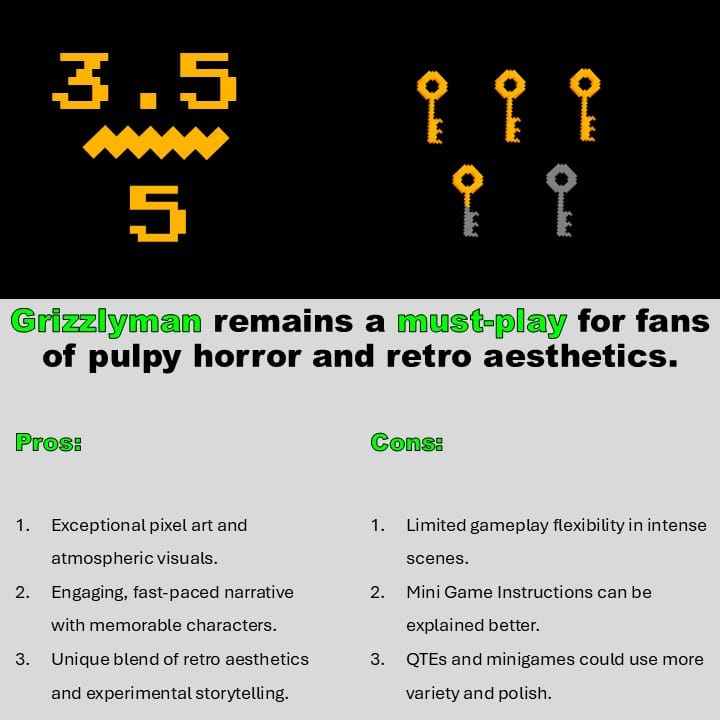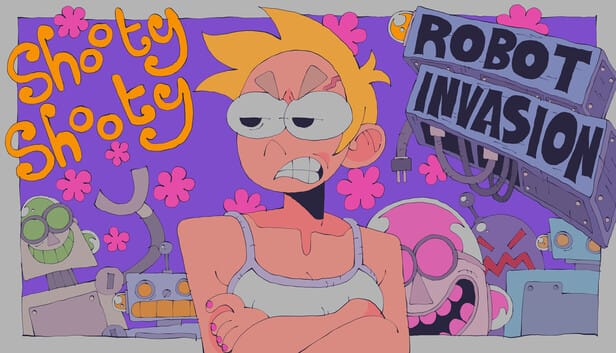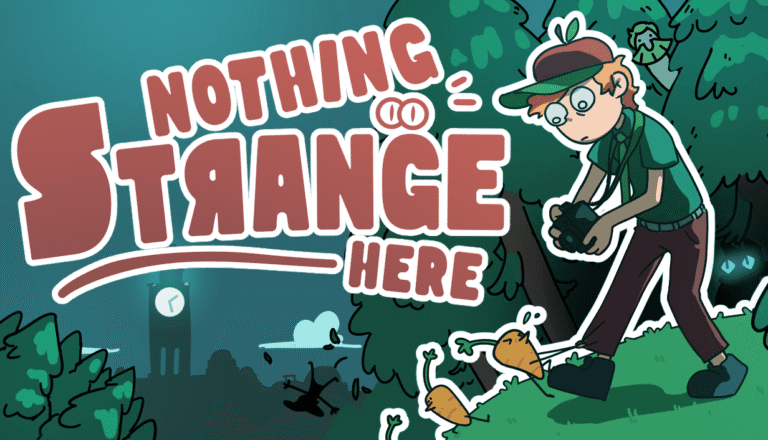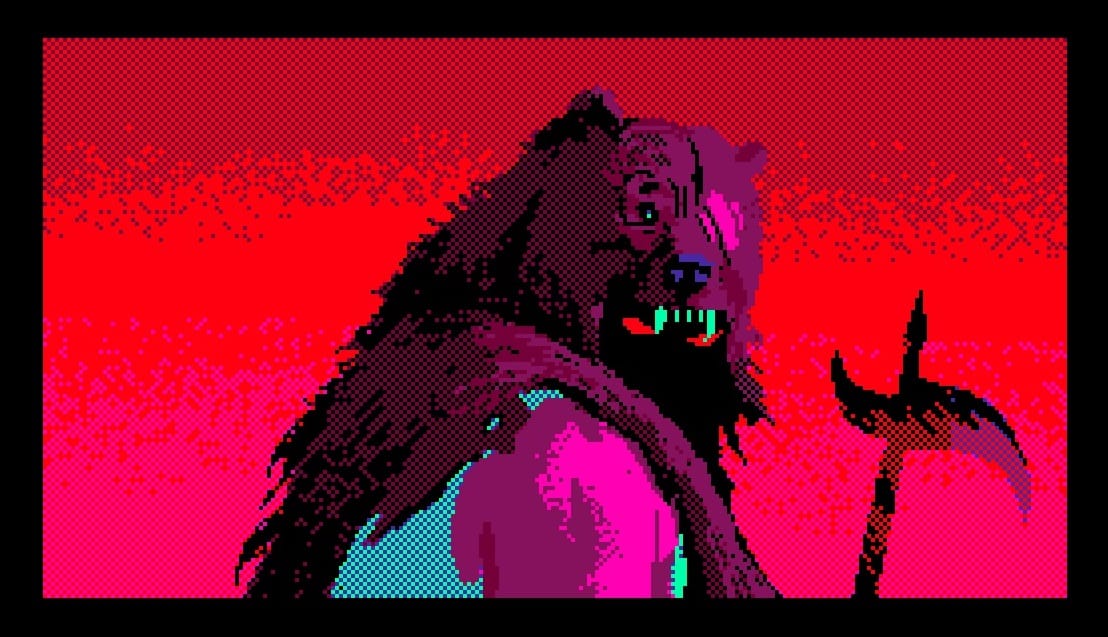
An amnesiac man in black leads a tour group through the Alaskan wilderness, shadowed by a mysterious figure clad in grizzly bear skin and wielding a fire poker. The premise alone is enough to pique the interest of any pulp-fiction enthusiast. Add in MK Ultra conspiracies, striking pixel art, and a hauntingly atmospheric setting, and you have Grizzlyman. This title marks the first installment in the Direct-To-Video Collection, a new trilogy of standalone Pixel Pulps. Upcoming entries, Dark Side Sewers and Possession Junkies, promise to expand the series with even more unforgettable tales.
What is a Pixel Pulp?
Pixel Pulps blend the gripping narratives of pulp fiction and visual novels with the retro aesthetic of CGA-era games from the late 1980s and early 1990s. They’re more than just stories; they’re software that embraces its digital nature, unapologetically showcasing its identity as a game.
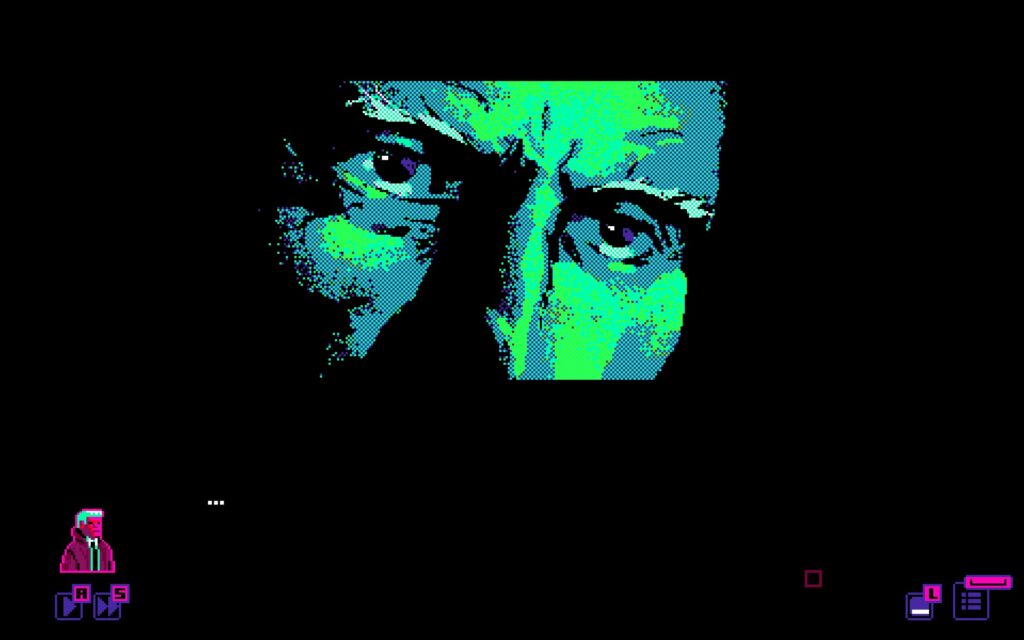
Visually, Pixel Pulps are a treat. Narratives unfold through meticulously crafted pixel art—wide cinematic shots, intimate close-ups, and tense portraiture that pull players into the action. The landscapes are beautifully abstract, with crisp foreground details that fade into cross-hatched, dithering backdrops. Characters echo the style of vintage EC horror comics, with adults featuring sharply defined jaws, pronounced wrinkles, and wild, expressive eyes that hint at inner turmoil. Even protagonists are depicted with bold, heavy lines, grounding the narrative in a gritty, lived-in realism.
LCB Game Studio, based in Argentina, is the mastermind behind the Pixel Pulps series. Their previous title, Bahnsen Knights, was a standout, masterfully blending the best elements from its predecessors. Grizzlyman builds on this foundation, delivering an experience that’s both unsettling and visually captivating.
Art Style
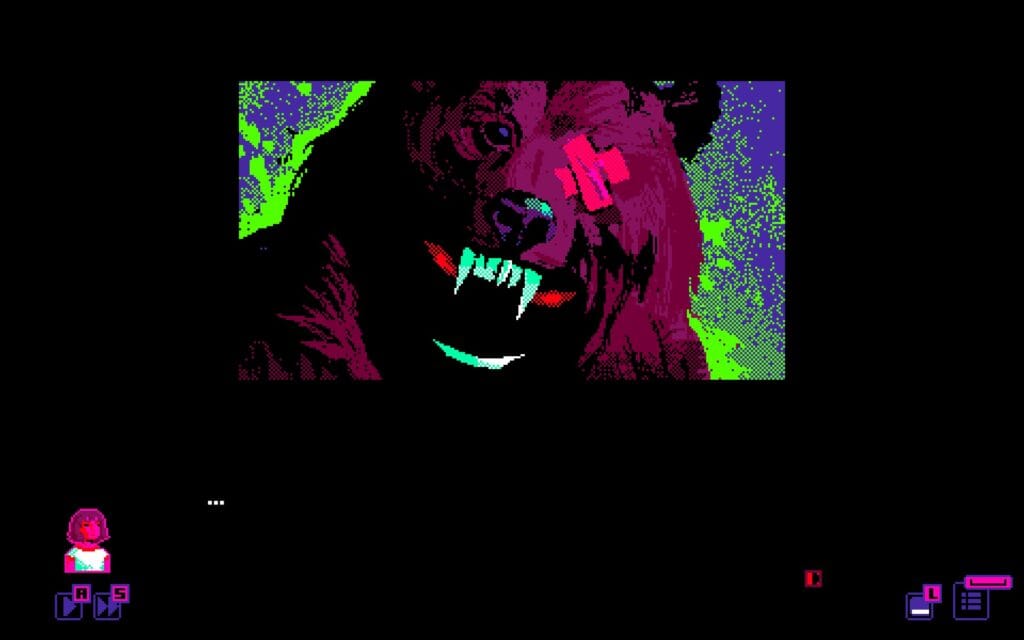
Grizzlyman showcases some of LCB’s most impressive pixel art to date. The eponymous character’s glowing red eyes alone are chilling, even in pixelated form. The game’s settings range from the foreboding Alaskan wilderness to secretive government facilities and cozy fireside camps. It’s a game designed for mysterious woods and stormy, apocalyptic skies—an atmosphere that’s as immersive as it is ominous.
Gameplay
Players take on the roles of multiple characters, with their perspectives gradually revealed throughout the story. The game’s narrative rhythm is perfectly attuned to the steady unveiling of new information. Spoiling too much would detract from the experience, but suffice it to say that Grizzlyman rewards curiosity and multiple playthroughs to unlock everything. Choices could have carried more significant weight.
The game’s story is divided into chapters, each told through the eyes of different characters. The fast-paced, well-written narrative keeps players engaged by introducing new faces and unraveling the mystery of the Grizzlyman. At its core, Grizzlyman is a slasher, leaving much of its interpretation up to the player. What do these events mean? Why are they happening? Encounters with the Grizzlyman are handled through quick-time events (QTEs), though these sequences could benefit from greater variety and clearer instructions for minigames.
As with previous Pixel Pulps, Grizzlyman includes a solitaire mini-game, adding a familiar yet satisfying diversion. However, some gameplay elements feel restrictive. Many intense sequences require actions to be performed in a specific order, leading to instant death if missteps are made. While this can be frustrating, the game offers unique bonus art for each type of death scene, softening the blow of failure.
Despite this rigidity, these moments are often used effectively to enhance the storytelling in ways that dialogue alone could not. Like any good visual novel, the script is Grizzlyman’s greatest strength, introducing characters and scenarios at a brisk pace while also providing moments to deepen the characterization, especially for Robert, my favorite protagonist. To reveal too much about the plot would spoil the experience, but fans of gory slashers will find much to appreciate in this short, gripping tale.
One drawback is the story’s abrupt ending. After a strong buildup and the development of compelling characters, the conclusion feels rushed, packing in action but leaving some narrative threads dangling. This may be intentional, as the trilogy could revisit these characters in future entries, but it leaves this installment feeling incomplete.
Availability
Grizzlyman launches on December 12, exclusively on Steam. It is the first Pixel Pulps title to be self-published by LCB Game Studio. The game is available in English and Spanish, with additional localizations planned. Console ports for the trilogy are also in development, with more details to come.
GrizzlyMan Accessibility Options
Options to change speed of messages and auto delay.
Final Thoughts
Grizzlyman is a chilling and visually stunning addition to the Pixel Pulps lineup. Its strong art direction, gripping story, and atmospheric world make it a standout narrative game, despite some minor gameplay frustrations and a somewhat rushed ending. Whether you’re a fan of pulpy horror, retro aesthetics, or experimental storytelling, this short but memorable experience is well worth your time.
[This review is based on a press build of the game provided by the publisher.]
